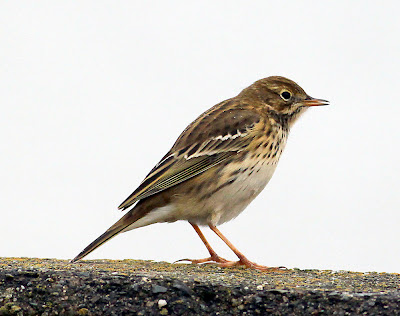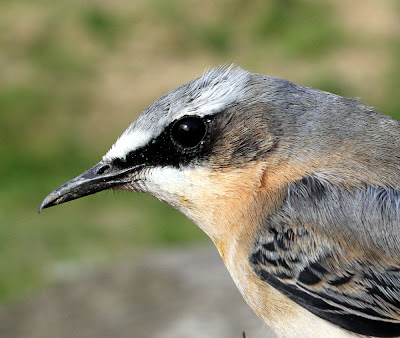Don’t worry, Another Bird Blog has not morphed into an online advice business, neither is it about to preach to all you bird freaks out there. It’s a book review today after my friends at Princeton University Press sent me a review copy of How to Be a Better Birder by Derek Lovitch.
How to Be a better Birder
I Googled “Derek Lovitch” and discovered that he too puts digit to keyboard in creating a bird blog, the blog being a likely place to find a snapshot of him. “Derek Lovitch, a career biologist and naturalist with a life-long passion for birds, now lives in Pownal, Maine, USA. He and his wife, Jeannette, own and operate the Freeport Wild Bird Supply, which serves as a vehicle to share their passion for birds, birding, and bird conservation. Derek goes birding nearly every day, all year long, and blogs about it here.” Well that’s OK then he comes with impeccable credentials.
The title of the book is self-explanatory, but how does it shape up to the expectation it might engender in a reader at just one of the many levels of birding expertise and experience? Bettering birding skills is a theme I heartily support and I wondered if this book could add much to the volumes of recent years which seek to point birders in the “right” directions. And anyway who’s to say the right way to go, and what does being a better birder involve? Is it about correctly identifying all the birds we come across, developing the knack of finding more birds, birding with a purpose in taking part in so called “citizen science”, or simply learning how to enjoy every bird we see whether common or rare? Whatever it means to you, Derek Lovitch probably covers it in this book, calling his birding method “The Whole Bird and More”.
In the very first chapter, Advanced Field Identification he explains the “Whole Bird and More,' where his holistic approach goes beyond jizz and asks us to consider a bird in the context of their environment and habitat and to think about their behaviour as well as their size. One of his first recommendations is that birders should bird, bird, and then bird even more, with added time in the field used to listen to, study, and watch birds. Pretty obvious you might think but Lovitch reasons we should put the “watching” back into bird watching rather than simply seeing a bird, identifying and listing it and then moving on to the next. In the same chapter he recommends that birders study moult so as to understand more about birds as well as using the knowledge to aid identification. How often do I read on a birding web site where a birder apparently ages a particular species in the field, especially during the autumn time? This is a time of the year when as a ringer I know that for a number of species that feat of supposed ageing is well-nigh impossible, and so perhaps at times it is better to say that we don't know or are not sure rather than pretend otherwise.
The central chapters cover the closely related topics of Birding by Habitat, Birding with Geography and Birding and Weather, with lots of good, practical advice for inexperienced birders who wonder why they cannot connect with a bird, without realising that they may be in the wrong habitat, or worse, in unsuitable habitat at the unlikeliest time of year and/or in the wrong weather conditions. At the start of the chapters DL makes the highly sensible suggestion that birders develop knowledge of plants’ identities, so furthering appreciation of biodiversity and the development of the ethic of conservation, a state of mind which in turn leads to a desire to protect birds as well as to simply watch them. By splitting the three topics the author has made each of them readily understood without using the jargon or shorthand that many birders like to use in the course of aiming for one-upmanship. The chapters cover all the essentials of migration, visible migration and why birders head to mainly coastal hot spots in spring and autumn, plus why, when and how the weather comes into play.
The book is written with a US audience in mind and so in the chapter Birding at Night the author enthuses readers to use the free Internet NEXRAD Doppler radar. Here they can actually watch migration in action and so help them decide where to go birding the next morning! All clever stuff, more technical than the preceding or following chapters, but essential reading all the same.
Chapter 6, Birding With a Purpose gives lots of advice and information on how birders can not only enjoy their birding, but also put their skills to good use in the cause of science, whether through a job in the field – albeit a probably lowly paid one, a scientific study, citizen science or even small scale personal study.
In the chapter Vagrants, a man after my own heart, Lovitch implores birders to do more than just twitch rarities found by other birders or watch birds by following “where to” directions in bird books, magazines, Internet forums and on pagers. He maintains that a good birder, and certainly the best birders, aim to find birds on their own, especially the vagrants which ultimately hit the birding headlines. Unfortunately the ethos of current birding is centered around vagrants and “good” birds with new birders introduced to a diet of birds where the commonplace gets barely a mention and where to take time out for a study is a perilous path which can lead to the humiliation of missing a “big one”.
This slim book is written in a highly readable and informative style, interspersed with the essential humour required to survive in amongst the birding scene. There is a huge amount of information and advice packed into its almost 200 pages with for good measure a comprehensive list of References and Additional Reading material.
Lots of birders won’t buy this book. They already know all there is to know about birds and birding – or at least they think they do. But maybe they should beg, borrow or steal a copy of How to Be a Better Birder and read it under the bed covers at night just to check they are doing it right and whether there is room for improvement?
How to Be a Better Birder
That’s a Painted Bunting on the book’s front cover, here’s a close up shot courtesy of USFWS.
Painted Bunting
More UK birds from Another Bird Blog soon, stay tuned.


















































.jpeg)




.jpg)













